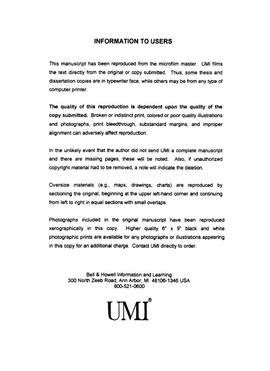| dc.contributor.advisor | Castagna, John P., | en_US |
| dc.contributor.author | Sun, Shengjie. | en_US |
| dc.date.accessioned | 2013-08-16T12:31:10Z | |
| dc.date.available | 2013-08-16T12:31:10Z | |
| dc.date.issued | 2000 | en_US |
| dc.identifier.uri | https://hdl.handle.net/11244/6046 | |
| dc.description.abstract | Intrinsic attenuation measurement from VSP using spectral ratios is seriously affected by scattering, coupling variations, and difficulties in first-arrival isolation. An algorithm to estimate intrinsic attenuation from VSP data where reliable seismic impedance logs are available effectively handles these problems. Using the available impedance profile calculated from well logs, VSP synthetics including up-going and down-going waves, multiples and attenuation are calculated. The scattering effect is removed iteratively by matching real spectral ratios with synthetic spectral ratios. Numerical modeling of infinite bandwidth and band limited cases shows that this method is accurate, effective and robust providing coupling variations are frequency-independent over the seismic bandwidth. Application to real VSP data from offshore Gulf of Mexico block Eugene island 354 shows high attenuation associated with potential gas pay. | en_US |
| dc.description.abstract | Attenuation is a potentially very important seismic attribute for seismic exploration and reservoir characterization. In order for attenuation to be utilized successfully as an attribute, it must first be reliably extracted from the seismic data and separated from scattering effects. Existing methods meet fatal difficulties in measuring attenuation from both surface seismic data and vertical seismic profile (VSP) data. | en_US |
| dc.description.abstract | Existing methods of attenuation estimation from surface seismic data suffer from wavelet extraction and scattering removal. An inversion method is developed to solve these problems. Instead of trying to extract the wavelet directly from the seismic trace and subsequently separate scattering effects, a full waveform forward modeling and damped generalized linear inversion (GLI) algorithm to invert Q from the surface seismic trace are employed. The forward theory includes all the multiples and attenuation in the synthetic, thus allowing direct separation of the intrinsic Q from scattering effects. The employed forward inelastic wave theory also allows dispersion effects to be accounted for and does not require a constant Q model. Employment of the robust damped GLI algorithm produces a stable and accurate inversion result. Numerical modeling studies show that the Q profile can be recovered even if the initial model is not near the correct answer. | en_US |
| dc.format.extent | xii, 129 leaves : | en_US |
| dc.subject | Geophysics. | en_US |
| dc.subject | Vertical seismic profiling. | en_US |
| dc.subject | Seismic reflection method. | en_US |
| dc.subject | Seismic waves Scattering. | en_US |
| dc.title | Determination of seismic attenuation from surface and downhole measurements. | en_US |
| dc.type | Thesis | en_US |
| dc.thesis.degree | Ph.D. | en_US |
| dc.thesis.degreeDiscipline | Conoco Phillips School of Geology and Geophysics | en_US |
| dc.note | Source: Dissertation Abstracts International, Volume: 61-09, Section: B, page: 4626. | en_US |
| dc.note | Major Professor: John P. Castagna. | en_US |
| ou.identifier | (UMI)AAI9988511 | en_US |
| ou.group | Mewbourne College of Earth and Energy::Conoco Phillips School of Geology and Geophysics | |
